Machu Picchu, the Inca citadel high on a ridge in the Andes Mountains, is one of the most impressive and widely recognized archaeological sites on Earth. Since I am fascinated by this spectacular place, I’ve written about it in several blog posts. In a new article I’ve focused on the geology – and this is posted on a website called GondwanaTalks. An online magazine about natural science for a wide audience, GondwanaTalks covers the earth sciences and addresses issues linked to society, humanity, and the planets. Geologist Kathelijne Bonne is the principal editor and writer. Originally from Belgium and now living in Spain, she cleverly translates the articles into Dutch and has a colleague who translates them into Spanish. I feel honored to have this international connection. (And — I greatly admire the language skills of many Europeans; over the years I have endeavored to improve my education gap in this area, but with limited success.)
My guest post is about the unique geology of the site, which combined with exceptional design and construction, have made Machu Picchu what we see today. Geologic processes that formed the Andes Mountains, the ridgetop building site, and the rocks that underly the site are briefly described. If you’d like to read it this is the link: https://www.gondwanatalks.com/l/machu-picchu-en/
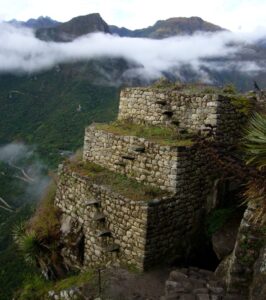
My favorite “flying staircase” at Machu Picchu
You might want to check out some of the other GondwanaTalks articles. Among my favorites is Lapis lazuli: following the trace of a blue stone (https://www.gondwanatalks.com/l/lapis-lazuli-en/ ) The color of the sky and deep mountain lakes, this gemstone has been incorporated in art objects and ground up for use in pigments for many thousands of years. It forms in limestone through contact metamorphism, such as by exposure to the hot fluids associated with volcanoes. The metamorphic rock attains the blue color from crystals of lazurite (in the sodalite group; a sodium calcium aluminum silicate sulfate). Lapis lazuli is found in the Andes Mountains, recognized in Andean artifacts that may date back to 4,000 years ago, and is mined today in northern Chile.
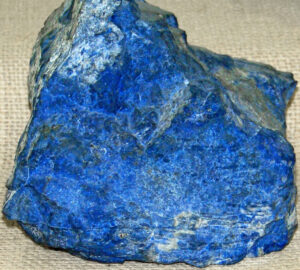
Lapis lazuli in Cretaceous limestone, Flor de los Andes Mine, Chile
A major source of lapis lazuli is found in the Sar-I Sang mine in the mountains of Afghanistan. Extracted for over 6,000 years and traded extensively, the stone was used throughout the ancient Old World, including in the spectacular death mask found in the tomb of Tutankhamun. Sadly, lapis lazuli today is considered a conflict mineral, similar to “blood diamonds”, mined to raise the funds that perpetuate fighting in a war-torn region.
There are other good GondwanaTalks articles about plate tectonics, the ancient Tethys Ocean, the African continent, and even space. In skimming through the various offerings, I’ve learned a lot that is new and interesting.
Real knowledge is to know the extent of one’s ignorance – Confucius
PHOTO
Lapis lazuli from Chile; https://www.flickr.com/people/47445767@N05; https://commons.wikimedia.org/wiki/File:Lapis_lazuli_(Rio_Tascadero_Limestone,_Lower_Cretaceous;_Flor_de_los_Andes_Mine,_Andes_Mountains,_Chile)_(49166048431).jpg
If you like my posts, please scroll down to the bottom of this page and leave your email address on my website. You’ll receive messages only when I publish a new post (about once a week) and my occasional newsletter. Join now to stay up-to-date about geology, geography, culture, and history.

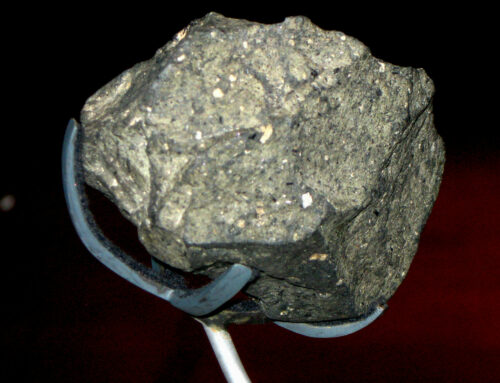
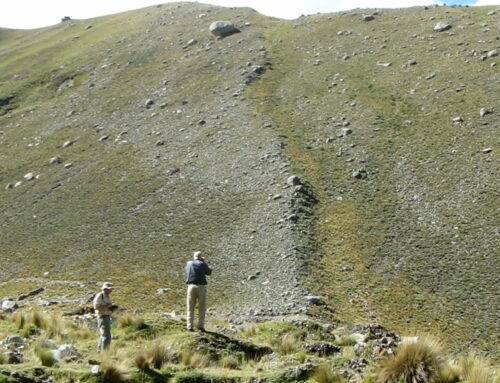

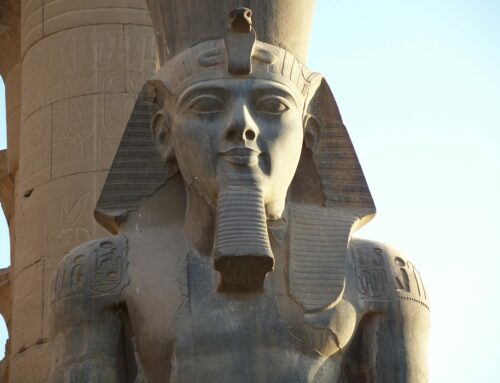
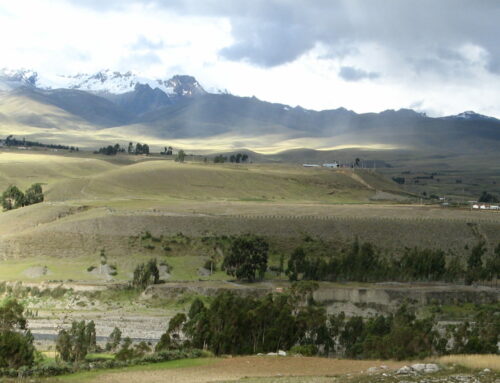
Leave A Comment